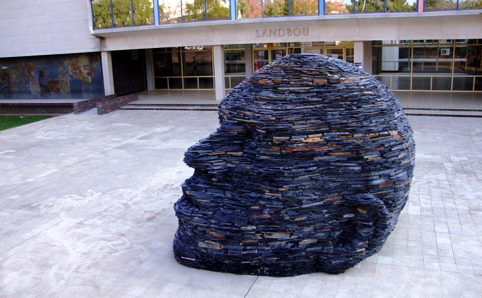Latest News Archive
Please select Category, Year, and then Month to display items
![]()
“A mind that is learning is a free mind and freedom demands the responsibility of learning” – J. Krishnamurti. What is the essence of education in our modern society amid the emerging, unprecedented, present-day circumstances? On 27 November 2020, third-year students from the University of the Free State (UFS) not only sought to inspire the youth in Kestell and bring them messages of hope, but also actively engaged them on how to be equipped with the necessary skills that would help them surf through the rapidly advancing world economics and the changing labour-market demands.
The collaboration with other expert stakeholders created a platform for significant conversation about alternative skills training that is designed to successfully address the current economic needs, thus enabling education to thrive and serve the intended purpose, which would ultimately manifest in effective transformation within communities. The UFS Qwaqwa Campus Community Engagement office coordinated the teamwork, comprising the Free State Department of Social Development, Maluti TVET College, the Free State School of Nursing, AGAPE Foundation for Community Development, Japie Lepele Foundation, the Riverside Finishing School, and Advance Academy.
TVET education allows students to progress in fields that suit them best and at the same time acquire skills needed for the future world of work. Information Technology (IT) students and staff members shared encouraging testimonies of their education experience and employment. The academy presented their finishing school programme to encourage learners to complete their secondary education even after they have suffered some interruptions. Although there are currently many challenges facing education in our semi-rural areas – such as Kestell – that result in lack of access to education and insufficient resources, civil partnerships like these are supporting and enabling communities in their quest to find their own solutions.
Ancient methods used for new sculpture
2012-05-11
 |
|
Angus Taylor sculpture “Van Hier tot Daar”
Photo: Supplied
10 May 2012
|
An Angus Taylor sculpture “Van Hier tot Daar” was installed at the Agricultural Building on the Bloemfontein Campus. The sculpture is a three-metre head (14 times larger than life-size) made out of stacked Marico slate. It weighs approximately 15 tons and took two weeks, after months of preparation, to be built on site. The portrait is generic as Taylor has used various people from his studio as reference.
Ms Angela de Jesus, Curator of the Johannes Stegmann Art Gallery on campus, says the process of stacking stone refers to one of the first methods used by humans to create an object or mark a place of significance in three dimensions. The sculpture speaks not only of man’s evolutionary development, but also of how humans are physically and psychologically connected and interdependent on the land. The sculpture that emerges from the ground, although monumental in scale, becomes somewhat of an anti-monument as it is non-representative and it is without a plinth.
The sculpture is the 16th artwork to be installed on the Bloemfontein Campus by the Lotto Sculpture-on-Campus Project funded by the National Lottery Distribution Trust Fund.